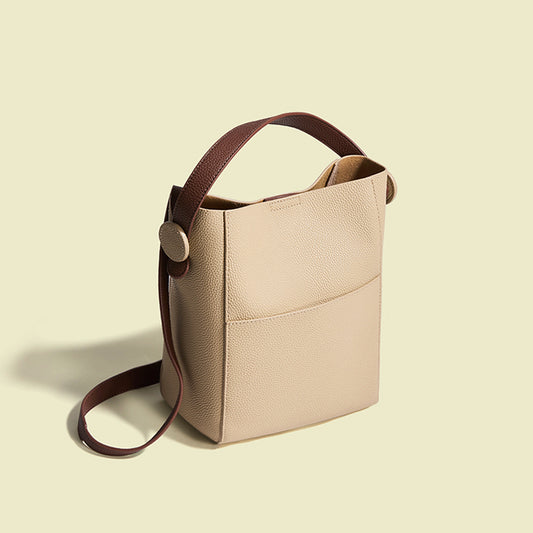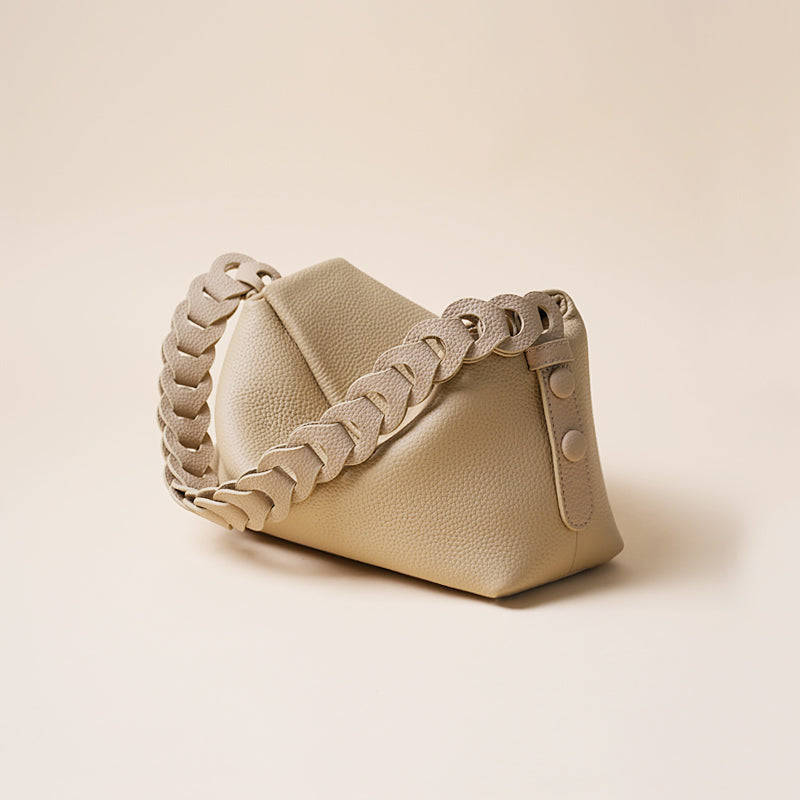The appeal of handmade, personalized pieces is undeniable in a world full of mass-produced, cookie-cutter fashion items. They provide the completed product with a distinctive and one-of-a-kind appearance and enable the maker to add their special touch.
Leather purse-making kits are a terrific place to start for anybody interested in learning more about leather crafts. Even individuals with little to no prior expertise in the industry may make a lovely, high-quality leather handbag with the help of these kits, which include all the supplies and instructions.
This blog post will guide you through making your leather purse, from choosing the right kit to troubleshooting common issues. With the help of a leather purse-making kit, you can create a unique and stylish accessory that will impress you.
Things you'll need before you start.
Before creating your leather purse with a leather purse making kit, you will need to gather a few supplies.
First and foremost, you will need a leather purse making kit that includes the necessary materials and instructions for your chosen design. This will typically include pre-cut leather pieces for the purse, handles and closures, sewing tools and needles, and other materials such as edge paint and burnishing tools.
You will also need a few additional tools, such as a cutting mat, scissors or rotary cutter, and a ruler or straight edge.
Finally, you will need a workspace with good lighting and a comfortable, flat surface. With these items in place, you will be ready to start your leather purse making project.
What kind of leather to use?
Choosing the right type of leather for your project is important when making your leather purse.
Full-grain leather, which preserves the leather's natural grain and texture and is made from the skin's top layer, is the most widely used leather for handbags. This type of leather is durable and resistant to scratches, and it will develop a beautiful patina over time.
Another popular choice is top-grain leather, made from the second layer of the hide and has been buffed and sanded to remove imperfections. Top-grain leather is less durable than full-grain leather but has a smooth finish and is more affordable.
Other types of leather, such as suede and split leather, are also sometimes used for purse making, but they are not as durable or high-quality as full-grain or top-grain leather.
Ultimately, I will choose genuine leather because the leather purses in Regina leather purse store are genuine.
Types of leather purse making kits
Many leather purse making kits are available, catering to various skill levels and design preferences.
Some kits are designed for beginners and include all the necessary materials and detailed instructions for completing a simple, classic purse design. These beginner kits are a fantastic way to start working with leather and can provide you with the information and confidence you need to take on more difficult projects.
Other kits are geared towards more experienced leather crafters and may include a wider variety of materials and more advanced techniques, such as hand-stitching or specialized hardware. These kits can help you create more complex and unique purse designs, allowing you to express your creativity and skills truly.
Some kits are designed for specific purse styles, such as clutches, shoulder bags, or crossbody bags, while others offer various design options for you.
In this blog, I will choose leather purse making kits for beginners.
How to cut the pattern from the leather?
When cutting the pattern pieces for your leather purse, it's important to use the right tools and techniques to ensure accurate and clean cuts.
The first step is to choose a cutting surface that is flat, sturdy, and larger than the leather piece you will be cutting. A cutting mat specifically designed for leatherwork is ideal, but you can also use a large piece of cardboard or plywood.
Next, lay the leather on the cutting surface with the side visible on the finished purse facing down. This will help prevent any scratches or marks on the visible side of the leather. Use a ruler or straight edge to carefully measure and mark the cutting lines on the leather using a pencil or chalk.
After that, make clean cuts along the lines you just marked with a rotary cutter or a sharp pair of scissors by exerting even pressure. Using a rotary cutter, use a new blade for the best results.
With these steps, you can cut the pattern pieces for your leather purse accurately and neatly.
How to mark and punch holes in the leather purse?
Marking and punching holes in the leather for your purse is an important step in the leather crafting process, as it allows you to securely attach the handles and closures.
To mark the holes, start by laying the leather piece on a flat surface and using a ruler or straight edge to measure and mark the hole locations. Use a little touch while marking the leather with a pencil or chalk so that the marks are visible but do not transfer to the completed bag.
Once the hole locations are marked, you will need to punch holes in the leather to accommodate the sewing needles and hardware. To do this, carefully use a leather punch or awl to make holes at the marked locations.
Be sure to use a punch or awl that is the right size for the needles and hardware you will be using because holes that are too big or small can cause issues with sewing.
With these steps, you can create holes in your leather purse efficiently.
How to sew a leather purse?
Sewing a leather purse is a challenging but rewarding task that requires patience and attention to detail.
Before you begin, gather all the necessary materials and tools, including pre-cut leather pieces, handles and closures, sewing needles and thread, and other hardware or embellishments.
You will also need a comfortable seat that allows you to work with your hands at a natural angle and a flat, well-lit workspace.
To start sewing, begin by attaching the handles and closures to the leather pieces according to the instructions in your leather purse making kit. This will typically involve using a stitching awl or leather needle and thread to sew the hardware to the leather.
Once the handles and closures are in place, you can begin sewing the purse together.
This is typically done using a saddle stitch, a strong and durable stitch commonly used in leatherwork. To make a saddle stitch, start by threading a needle with a length of waxed thread, then tie a knot. Next, push the needle through the hole in the leather from the front to the back, then bring it back through the hole from the back to the front.
Repeat this process, alternating holes and passing the needle through the previous stitch to create a strong, interlocking seam. Continue stitching until all the purse pieces are securely sewn together.
You can sew a beautiful and durable leather purse with practice and patience.
How to finish a leather purse?
Finishing a leather purse involves applying the final touches that will give the purse a polished and professional look. There are several techniques you can use to finish a leather purse, depending on your personal preferences and the design of the purse.
One common technique is edge painting, which involves using a brush or sponge to apply a layer of edge paint to the edges of the leather. This can help protect the edges, prevent fraying, and add a pop of color or contrast to the purse.
Another finishing technique is burnishing, which involves using a burnishing tool or waxed thread to smooth and polish the edges of the leather. This can create a shiny, glossy finish and give the purse a more refined appearance.
Additionally, you may want to add decorative stitching or other embellishments to the purse, such as tassels, charms, or embossing. With these techniques, you can give your leather purse a professional and stylish finish.
Conclusion:
Creating your leather purse is a rewarding and satisfying experience that lets you put your personal touch on a functional and stylish accessory.
With the help of a leather purse making kit, even beginners can learn the skills and techniques needed to make a beautiful and durable leather purse. Making a leather purse involves:
- Choosing the right materials.
- Cutting and preparing the leather.
- Attaching the handles and closures.
- Sewing the purse together.
Following the steps outlined in this blog post, you can create a unique and personalized leather purse that will impress you. Additionally, the skills and knowledge you gain from making a leather purse can be applied to other leather crafting projects, allowing you to explore various creative possibilities.
Whether new to leather crafting or an experienced maker, making your leather purse is a fulfilling and enjoyable journey.
















